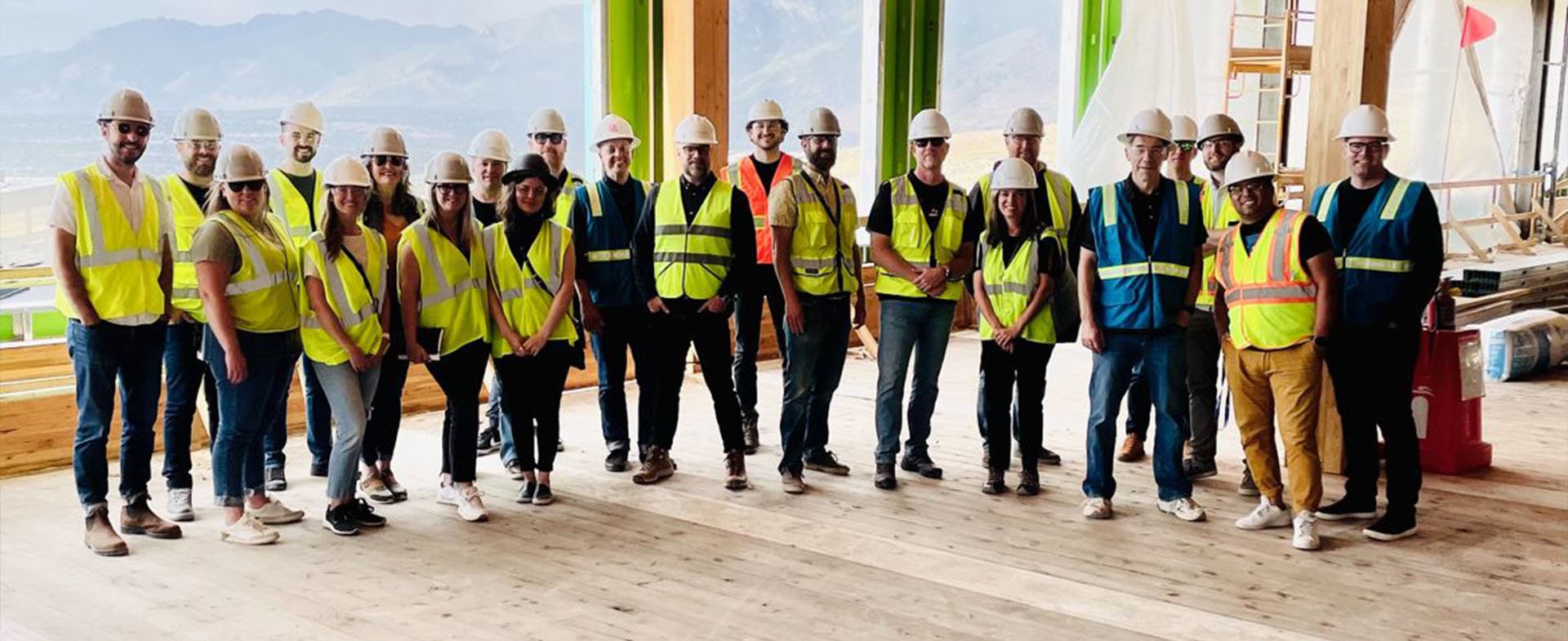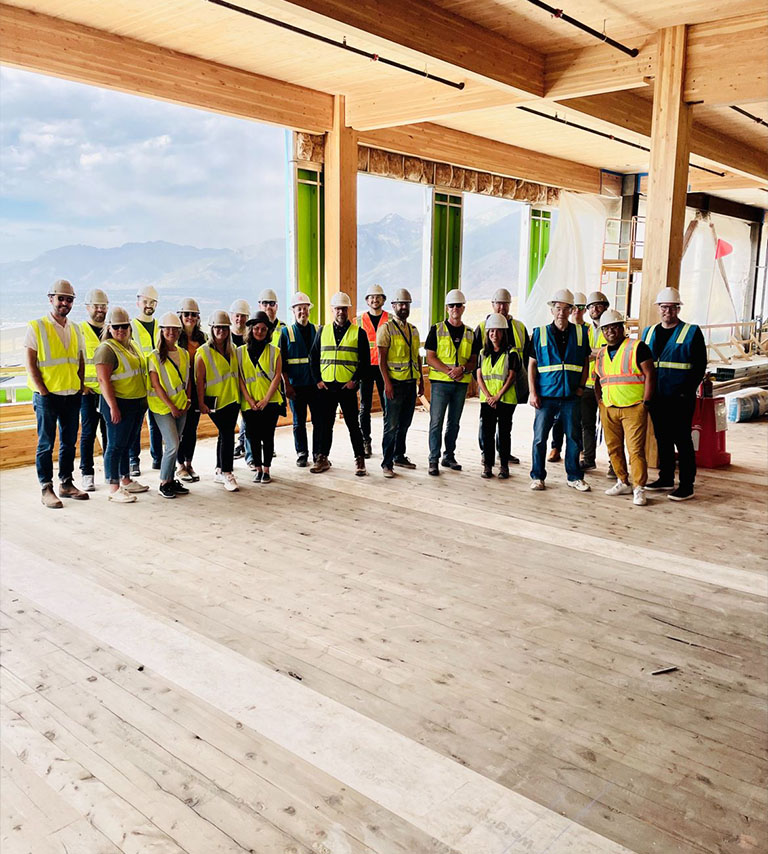

Interviews
/
11/2/2023
The social role of architecture
Architect Jake Gines from Method Studio explains how high-performance, sustainable building products can help architecture better serve communities
Architect Jake Gines from Method Studio explains how high-performance, sustainable building products can help architecture better serve communities.
Your designs encompass many different areas of use (museums, schools, residential complexes, hotels, historic buildings). How do you manage to ensure the same expertise, competence, and flexibility around so many different sectors?
Method Studio is an architecture and design firm with over 120 staff. We're a collection of really talented people and that's part of how we manage design excellence across all market sectors: surrounding ourselves with and working alongside really talented professionals. We are dedicated to training our young staff coming up in the company, as well as bringing in talented professionals that have expertise in different market sectors and different building types, so that we can lead from a position of expertise.
One of the things that we're looking for the most in any person is how are they with other people? How are they with our clients? Because one thing that makes us unique is that we listen to our clients. Although we are the experts in our field, we listen to others and bring in their expertise as well. I think that makes our projects so much better.
"Method Studio is committed to engage very talented architects to be able to achieve design excellence across all market sectors”

Method studio is committed to engage very talented architects to be able to achieve design excellence across all market sectors.
In what way do you think that architecture serves the community?
Architecture can serve the community in lots of different ways, because buildings impact communities, they shape communities, they help the people in those communities live in particular kinds of ways. So, it depends on how you define “community” and what that community is. There's a different kind of community in an urban center versus community at a university campus. For instance, in an educational building, it's all about creating an infrastructure for students and faculty to learn, inspire, create and share in a particular kind of environment that expresses those ideals. On the other hand, designing a performing arts building is all about expression, experience and bringing community together to celebrate place, culture, music, etc. I think our buildings engage community in that way – being highly responsive to people and place.
One of our other market sectors is multi-family housing, in particular low-income housing. We're looking at communities that are maybe formerly homeless or a refugee population. Whatever the case, those developments are places where community is created and diversity is celebrated while providing necessary and critical services to those who reside there.
“Buildings impact communities, they shape communities, they help the people in those communities live in particular kinds of ways"
So, can architecture also have some kind of social responsibility purposes?
Absolutely, architecture is always in service of people, so we have a great responsibility to enhance our communities and design places where everyone’s wellbeing is considered. For instance, we're engaged with professionals in the community that are on the front lines of homelessness and we're asking ourselves the question: how can we as architects help them accomplish their goals to address homelessness? We cannot solve all the problems of the world, but we as architects do have a certain unique set of skills that can be employed to support other people and organizations as we come together to solve problems that are much bigger than architecture.
"We as architects have a certain unique set of skills that can be employed to support other people and organizations as we come together to solve problems that are much bigger than architecture"
How much focus do you put on sustainability? What kind of role do building materials, just like the ones supplied by Mapei, play in this field?
To answer this question, I think I'll talk about two of our projects. The reason we're here at this conference with a collection of people representing The Church of Jesus Christ of Latter-day Saints, is that utilizing stone to construct religious buildings has proven to be a resilient, durable, millennial-proven material of choice. This is a wonderful opportunity for us to better realize that the buildings we design should last for 100-plus years using materials that are made for longevity, strength and beauty. We look at sustainability from many of different lenses, certainly sustainable material usage and use is at the top of the list.
One more example: This year, Method Studio designed the first large-scale mass timber building in Utah which is currently under construction. We're using cross-laminated timber and glulam construction as the primary structural system, except for the seismic bracing components. Mass timber is highly desirable because it is a material that is sustainably managed, renewable, sequesters carbon, known for its ease of fabrication and assembly, and so many other positive impacts to our environment. We're excited to be on the forefront of using that material in a special way to rethink the way we construct and build buildings now and in the future.
"Utilizing stone to construct buildings has proven to be a resilient, durable, millennial-proven choice. The buildings we design should last for 100-plus years using materials that are made for longevity, strength and beauty"

A group of US professionals (including Mr Gines of Method Studio) of the stone industry took part in the "Designing with stone" training programme, sponsored by Mapei.
What characteristics do you look for in the building products now you use in your design?
We try to find a marriage of a lot of things. Obviously, from a design perspective, we're looking for products that can do the job, that are beautifully articulated and have purpose and meaning, but also have all the performance criteria needed for the project to be a success. Depending on the application, we're looking at strength properties, water mitigation, durability, acoustic properties, or how the product is helping the environment versus hurting the environment. The construction industry accounts for close to 50% of the CO2 emissions in the environment so, we're looking at what the real impacts are of our choices in material usage and how they perform over the entire life-cycle. So, we don’t only just value structural characteristics or aesthetics, but also environmental performance and how we can build better, more sustainable buildings.
"The construction industry accounts for close to 50% of the CO2 emissions in the environment so, we're looking at what the real impacts are of our choices in material usage and how they perform over the entire life-cycle”
So, how important is it to go on with training, even for architects who have already carried out a lot of different approaches?
Ongoing education is one of the most important things we can do as professionals, because one of the most dangerous traps an architect can fall in is thinking, “I've already done that. I know what I'm doing”. As the industry changes and advances in materials, fabrication and application processes evolve, we always need to be more educated so that we can enter every design project at the highest level that we can possibly be at.
We must be willing to listen and learn and grow. Those architects who don't do that often struggle. Our firm, Method Studio, is very proud of the fact that we listen to other people. We try to learn not only for our own professional development and for the betterment of the project, but also for the betterment of society. We can serve our communities better if we're more informed architects.
“We try to learn not only for our own professional development and for the betterment of the project, but also for the betterment of society. We can serve our communities better if we're more informed architects”








